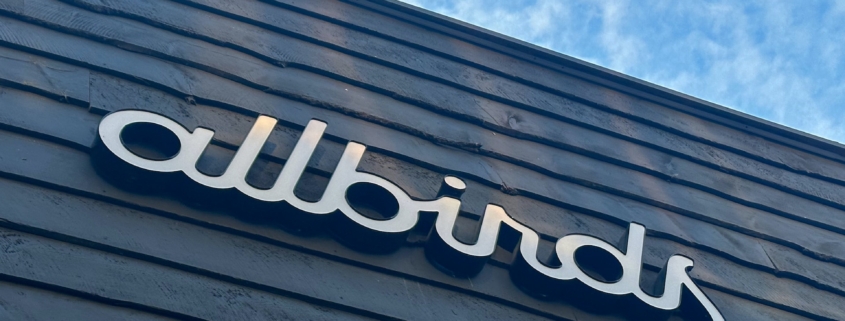Allbirds: Adore the Core
Customers’ needs may alter. Markets may change. New products challenge the status quo. No matter how a brand-business landscape morphs, there are some evergreen brand-business marketing principles that must never be forgotten.
One principle is this: keep the brand-business core strong. A brand-business’ core must be continually re-energized, protected and strengthened. It is the brand-business core that will profitably finance a turnaround, keep a brand-business growing and provide a platform for the future. Ignore what core customers love about your brand-business at your peril.
This is the current situation at Allbirds, the sustainable shoe enterprise. According to The Wall Street Journal, Allbirds, once a Silicon Valley statement footwear brand-business, has “lost its way.” Allbirds lost its way by looking beyond its core base; by coveting others at the expense of Allbirds lovers.
Core customers already know what is great about a brand. When a brand-business expands beyond its core group, the brand risks losing its core group. When this happens, the goal must be to restore and repair core customers’ relationship to the brand-business. It is imperative to reinforce what core customers like about the brand. Encourage core customers to frequent the brand more often.
This is exactly what did not happen at Allbirds. And, now, recognizing the problem, Allbirds is making strategic changes to re-excite its core customer base. This is good. But, how Allbirds goes about its changes needs to be reviewed.
Stop the Bleeding
Allbirds first step is stopping the bleeding by trimming shoe and clothing options, opening fewer stores and creating more compelling footwear. This is a strategic necessity.
More Loyal, More Profitable Customers
Yet, nowhere does the Allbirds strategy say that it will aim at core customer frequency.
Here is a fact: it is easier to get a customer who already uses your brand to come a little more often than it is to attract a new customer who does not use your brand at all. When a brand-business is in trouble, the brand-business’ objective must be to stop the shrinking of the customer base and to increase purchase frequency. A small increase in frequency can make a huge difference to brand health. Coveting customers you do not have is not a pathway to profitability. Furthermore, a focus on tactics and products that might seduce specious segments becomes a major and financial distraction.
Allbirds needs to convince its core customers to buy at least one more time a year. And, perhaps if possible, have these core customers buy just one more item each time they are purchase ready. For example, Allbirds has seasonal footwear as well as athletic footwear
Etsy, the craft website changed its strategy in 2017. Etsy recognized the need to increase frequency among core customers. Etsy stated, “… we disclosed that about half of our buyers only buy once a year on Etsy. And, we really believe there’s an opportunity to bring those buyers, our existing buyers, back to buy more things on Etsy. So making it so that our existing buyers come back more than once, I think, is a big opportunity. Because half of them only come back once.”
There are reams of data showing the value of a core customer. Seminal research from Frederick Reichheld on the lifetime value of a loyal core customer essentially showed that as brand loyalty increases, the likelihood of defection decreases. Mr. Reichheld concluded that reducing defections by 5% could increase profits by 25% and more. Other research indicates that loyal core customers are 8 times as valuable as those who just consider the brand-business.
The reverse is true as well. Losing a small percentage of core customers will account for a disproportionate amount of lost income.
There are data confirming that it costs 3-4 times as much to attract a new customer as it does to keep a customer loyal. And, now that there are so many digital, online options for media, researchers show that these attraction costs may be as high as 6 times more for non-core customers. Focusing on core customers, strengthening their core brand beliefs is an excellent way to build brand loyalty.
Of course, brands must manage attract new customers while creating more brand loyalty among its core customer base. But, when a brand is in trouble, the first priority is to stop the hemorrhaging of the customer base.
Know Your Core Customers
One of Allbirds’ founders told The Wall Street Journal that core customers tend to buy Allbirds’ products because of price, stylishness and comfort. These attributes are features, potentially, functional benefits at best. But, what about the brand-business’ emotional and social rewards? Focusing on features and functional benefits alone does not help in understanding the customer.
Repeatedly, The Wall Street Journal reports an Allbirds focus on the age of the core customer and the age of the desired new customers. Is there a real understanding of the core customer and like-minded others that does not depend on age? Viewing the audience by age alone is dangerous.
Based on the original promise and mission of the brand-business, age was not a factor: personal values and rewards were key drivers. Sure, values and rewards shift as one ages, but not for everyone. And, many younger customers share or adopt values with those who are older.
Love your core customers if you expect them to love you. Ultimately, the brand-business’ aim must be more customers, more often, more brand loyal, more revenues and more profitable. When a brand has lost its way, the first focus must be to shore up the core customer base. In other words, adore the core or your brand is done for.



